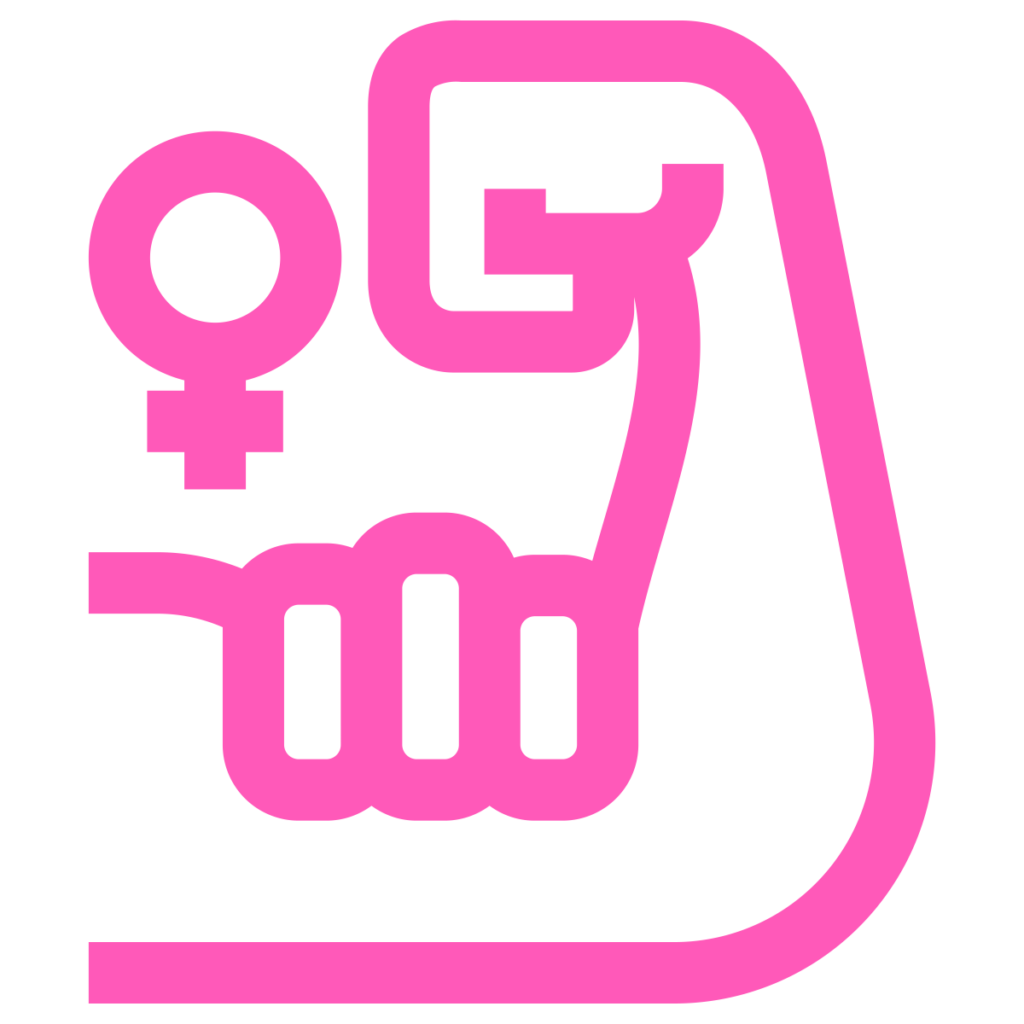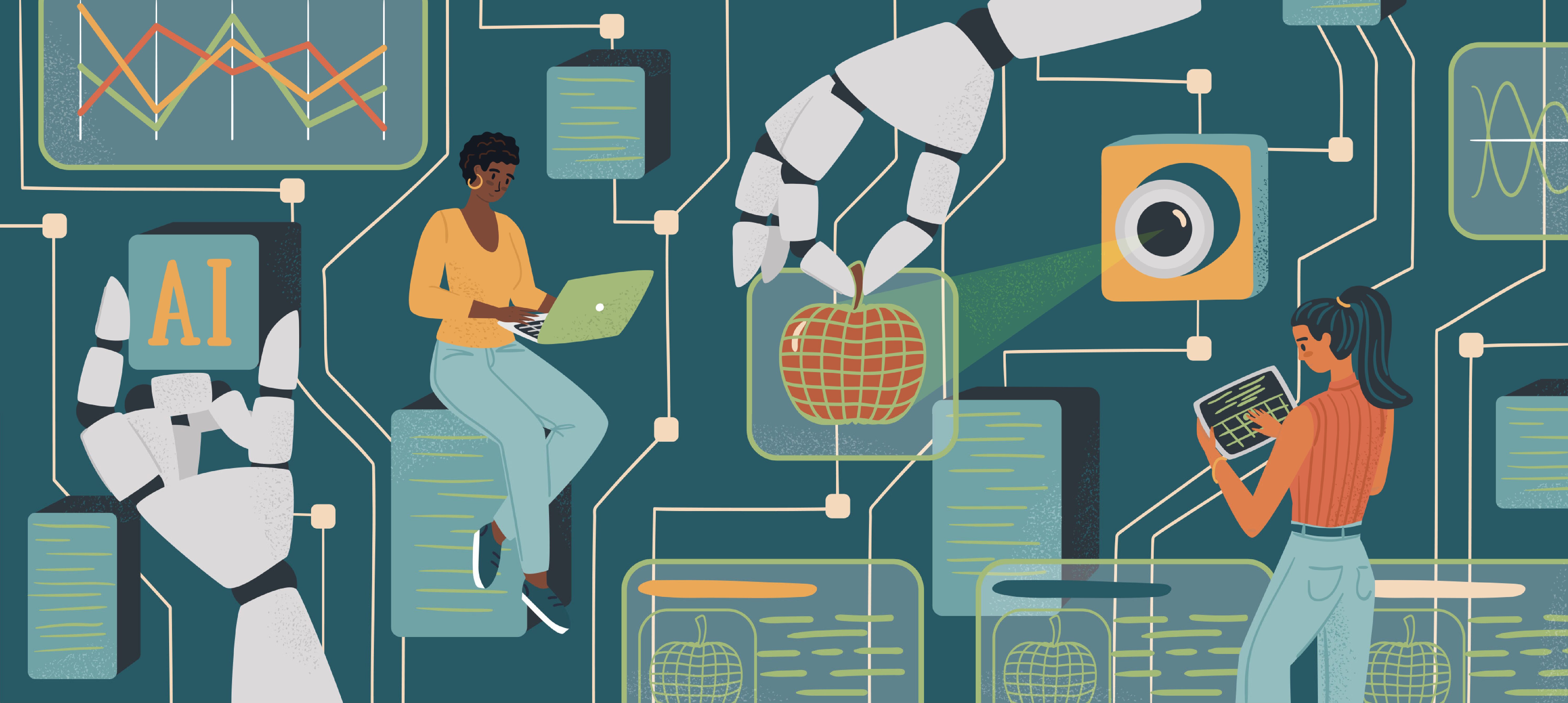In our previous post, we emphasized the importance of empowering women through AI and the need for ethical AI practices. Today, we’ll delve deeper into how a culture addresses bias against women and develops fair and inclusive AI applications.
Addressing Biases in AI – Navigating the Path to Fairness
Addressing and mitigating biases against women is not just a nice-to-have, it’s a critical aspect of AI development. Biases emerge from tainted data, human biases, or flaws in algorithmic design. To combat biased AI systems, organizations need to proactively identify and eliminate biases before releasing AI applications to the public. When individuals and companies prioritize these proactive measures, we stand a greater chance of promoting inclusivity, fairness, and equal opportunities for women through AI technologies. If not, AI systems will maintain the status quo or even worse, double down on biased practices against women.
Behind the Curtain – AI Bias Against Women
Let’s take a look at a couple of instances that demonstrate the existence of AI bias against women. Amazon’s automated recruitment system was a prime example. Originally intended to evaluate job applicants based on qualifications, the system learned biases against women due to historical hiring practices at the company. As a result, resumes from female applicants were unfairly rated lower than those from male applicants. Amazon eventually canceled the use of the recruiting system.
Another example of known bias against women is word-embeddings. Word-embeddings occur when words are turned into numbers. Harvard Business Review’s Josh Feast concluded in, “AI is learning gender bias from humans” where AI word-embeddings deduced that…

“Father is to doctor as mother is to nurse”
and “one gender category is angry more often than another”
The Observer reported similar word-embedding biases in AI Robots Can Amplify Sexism by Learning From Humans, Study Finds “word embeddings trained using Google News articles…exhibit gender stereotypes to a disturbing extent.”
With the rising popularity and advancement of AI, it will soon permeate a wide range of human and non-human interactions. The highlighted examples are just a glimpse of many instances, but underscore the pressing need to tackle gender bias in AI.


Ethical AI Frameworks – Feedback Loops
To ensure accountability and build trust, it is crucial that AI systems are transparent and understandable. The average woman should have the ability to grasp how AI systems make decisions and the factors that influence those decisions. It is important for her to comprehend how AI technology analyzes information and utilizes it to make choices that impact her daily life. Enabling transparency in training data and providing explanations for AI outcomes will help minimize the chances of biases going unnoticed or unquestioned. By ensuring that the process and results of AI are clear and user-friendly, a greater number of women will comprehend the purpose and potential impact of AI systems and contribute to mitigating potential biases.
Companies should establish Ethical and Responsible AI Frameworks encompassing well-defined guidelines and best practices for the development and deployment of AI. These frameworks should align with principles such as fairness, transparency, privacy, and accountability, while also taking an additional step forward. They should emphasize the inclusion of diverse development teams that consider a woman’s perspective and experiences, allowing the AI system to actively unlearn biases against women. Recognizing that biases may persist over time, it is crucial to incorporate ongoing monitoring and evaluation as integral parts of project scope and budgets. This involves routine feedback loops and assessments from diverse user groups that allow for implementing necessary adjustments to ensure the consistent enforcement of fair practices.
AI’s New Frontier – NIST and the White House Public Working Group
On March 30, 2023, NIST, The National Institute of Standards and Technology launched the Trustworthy & Responsible Artificial Intelligence Resource Center (AIRC) including an AI Risk Management Framework (RMF) and other resources. The framework is voluntary today, but provides guidance for companies to establish fair AI development practices. However, it does not explicitly address biases against women. Recently, the White House announced the NIST Public Working Group on AI aimed at developing crucial guidance to address the unique risks associated with generative AI technologies. It is an excellent opportunity for women to actively participate in shaping the future of AI in the United States by joining this public group. As women, we should seize this opportunity and make our voices heard.
So, who will actively participate in the NIST Public Working Group for AI or similar groups? How many women will seize this pivotal moment, join forces, and forge a path towards a future that empowers us, our daughters, and our friends with the support of AI?
It’s a Girl Thing, You Wouldn’t Understand…
As the division in our country grows more evident than ever before, it is surprising to see that women can be just as guilty of bias against their fellow women as men.

How many women will admit or even “recognize the devil in the mirror”?
In 1973, psychologists Staines, Tavris, and Jayaratne introduced the term ‘Queen Bee‘ to describe a phenomenon observed among women who attain high positions in traditionally male-dominated fields. These women may consciously or unconsciously distance themselves from other women to protect their own positions. They may feel isolated and believe that opportunities for women at the top are limited, leading them to adopt masculine behaviors and tendencies to keep their distance from female colleagues. Their research revealed that instead of supporting or mentoring other women, some even reinforced gender stereotypes or perpetuated a male-dominated culture in the workplace. It’s important to note that women in leadership positions who succumb to this behavior can hinder the professional growth of other women, particularly those starting their careers or in lower-level positions within the organization.
QBP or Queen Bee Phenomenon, is a troubling outcome of women striving to succeed in male-dominated industries. A more recent term used to describe this behavior is “Self-Group Distancing,” and refers to the coping response of individuals from underrepresented groups who face social identity threat.
Considering this, if AI presents an opportunity for women to break free from these patterns, the question arises: Where and How do we Begin?”
A New Playbook – A New Syllabus
The current playbook for addressing bias in the workplace through education, training, and awareness has proven ineffective in closing gender disparities. Despite ongoing efforts, the statistics remain disheartening. A recent UN report reveals that women’s representation in leadership roles has stagnated at around 10 percent since 1995, and women continue to occupy less than a third of managerial positions. Even in countries where women surpass men in education, the gender income gap persists at a staggering 39 percent in favor of men.
Clearly, a new approach is needed as the existing playbook falls short. The emergence of AI introduces further complexity, demanding fresh strategies and innovative thinking. It’s important to acknowledge that there is no established playbook for addressing bias against women in the context of AI. We are navigating uncharted territory, and it requires a collective effort to chart a new course.
Rather than relying on the tired and ineffective diversity speak, we must explore new avenues, challenge traditional norms, and redefine our understanding of success. This calls for a paradigm shift in our approach to education, training, and awareness. We need to cultivate a supportive and fair environment that equips women with the knowledge and skills to navigate the evolving AI landscape. It’s time to break away from conventional thinking, embrace a growth mindset, and forge a path that ensures equal opportunities, representation, and success for women in the age of AI.
Training AI to reduce bias is possible, but completely eliminating bias poses significant challenges. AI models learn from historical data, and if that data contains biases, the models can unintentionally perpetuate those biases. Achieving safe and unbiased AI requires a dedicated effort to program bias out of machine-based systems, which necessitates robust human oversight. AI cannot be relied upon to self-regulate effectively.
Rather than placing blind trust in new AI tools that promise to streamline our lives and save time, we must subject AI systems to rigorous testing and maintain strict control over their deployment. This means exercising caution and vigilance, keeping a tight rein on AI’s capabilities, and involving a diverse group of individuals committed to ensuring a fair and equitable outcome for all genders. By approaching AI with a deliberate and cautious mindset, we can foster a more holistic and inclusive future that benefits everyone.
Whose Job Is AI, Anyway?
It falls upon each of us — women like you, me, and those we know. The responsibility begins with individuals. Which women or female organizations do you align with to advance our cause? Who do you mentor, sponsor, and advocate for when she isn’t in the room?
If you feel dissatisfied with your answers to these questions, it’s time to take action. As women, we have a vital role in supporting and uplifting one another. Regardless of the industry where we stand, let’s seek out groups that accelerate our career goals and foster connections with fellow women. Mentoring becomes a priority for intelligent, accomplished, and capable women like us. With our numbers, talent, skills, and the transformative power of AI at our disposal, it’s time to take action towards a future that is truly equal and fair. We must claim our true roles, positions, and titles, and amplify our voices.
Yes, it’s an immense responsibility, and achieving fairness and equality goes beyond integrating women into roles simply based on their gender. True fairness lies in the hands of a neutral AI party, one that embraces unbiased decision-making and recognizes and rewards individuals based on merit and qualifications. As we take action, AI can stand as a steadfast ally, marching alongside us with unwavering determination, impartial and resolute, to dismantle gender bias and champion our cause for equality. Can you hear the battlecry? In the words of politician Marcy, ‘To the victor belong the spoils.’ Together, let us claim our rightful place and secure the spoils of a future that is equal and just.

